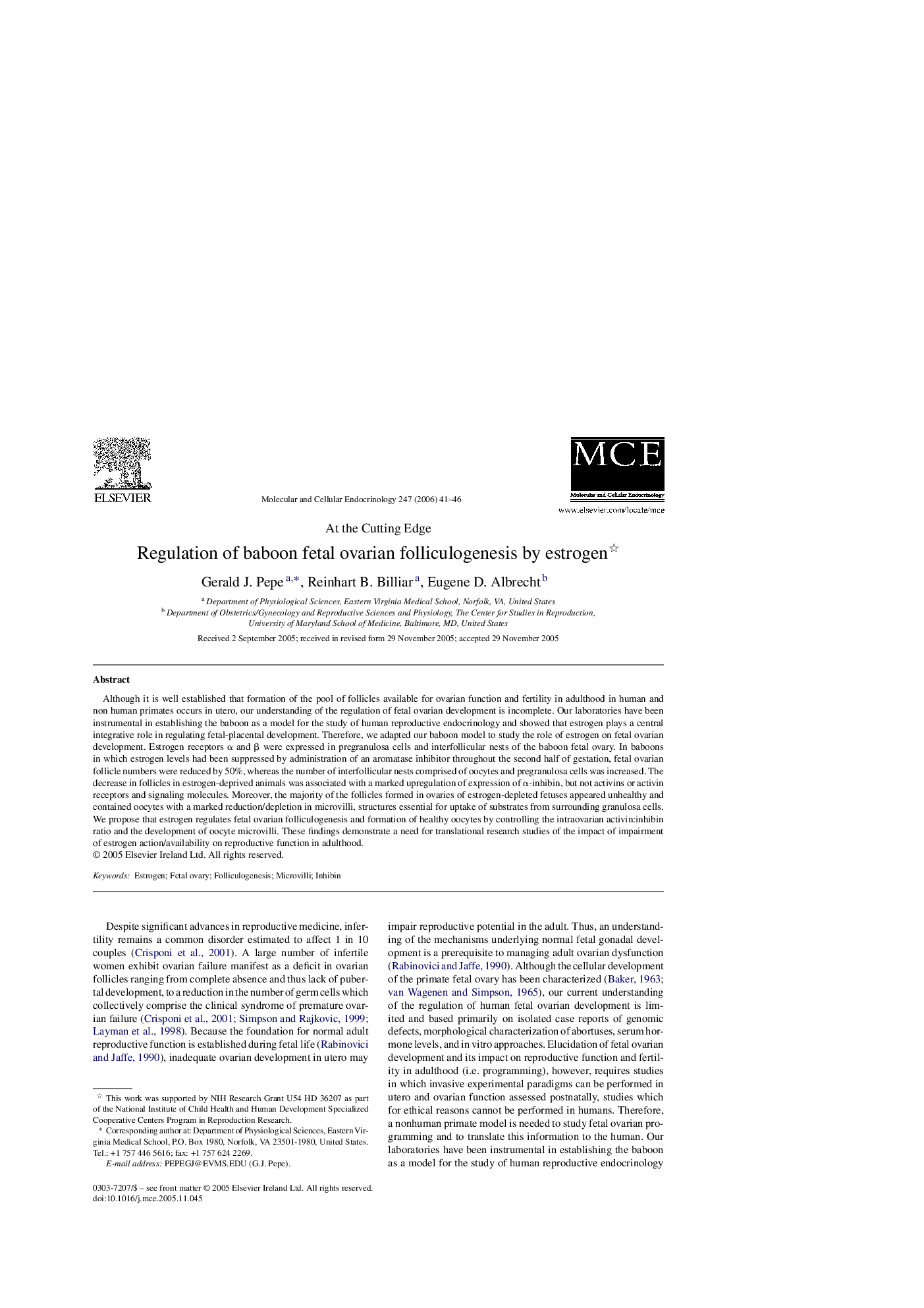| Article ID | Journal | Published Year | Pages | File Type |
|---|---|---|---|---|
| 2198284 | Molecular and Cellular Endocrinology | 2006 | 6 Pages |
Although it is well established that formation of the pool of follicles available for ovarian function and fertility in adulthood in human and non human primates occurs in utero, our understanding of the regulation of fetal ovarian development is incomplete. Our laboratories have been instrumental in establishing the baboon as a model for the study of human reproductive endocrinology and showed that estrogen plays a central integrative role in regulating fetal-placental development. Therefore, we adapted our baboon model to study the role of estrogen on fetal ovarian development. Estrogen receptors α and β were expressed in pregranulosa cells and interfollicular nests of the baboon fetal ovary. In baboons in which estrogen levels had been suppressed by administration of an aromatase inhibitor throughout the second half of gestation, fetal ovarian follicle numbers were reduced by 50%, whereas the number of interfollicular nests comprised of oocytes and pregranulosa cells was increased. The decrease in follicles in estrogen-deprived animals was associated with a marked upregulation of expression of α-inhibin, but not activins or activin receptors and signaling molecules. Moreover, the majority of the follicles formed in ovaries of estrogen-depleted fetuses appeared unhealthy and contained oocytes with a marked reduction/depletion in microvilli, structures essential for uptake of substrates from surrounding granulosa cells. We propose that estrogen regulates fetal ovarian folliculogenesis and formation of healthy oocytes by controlling the intraovarian activin:inhibin ratio and the development of oocyte microvilli. These findings demonstrate a need for translational research studies of the impact of impairment of estrogen action/availability on reproductive function in adulthood.
